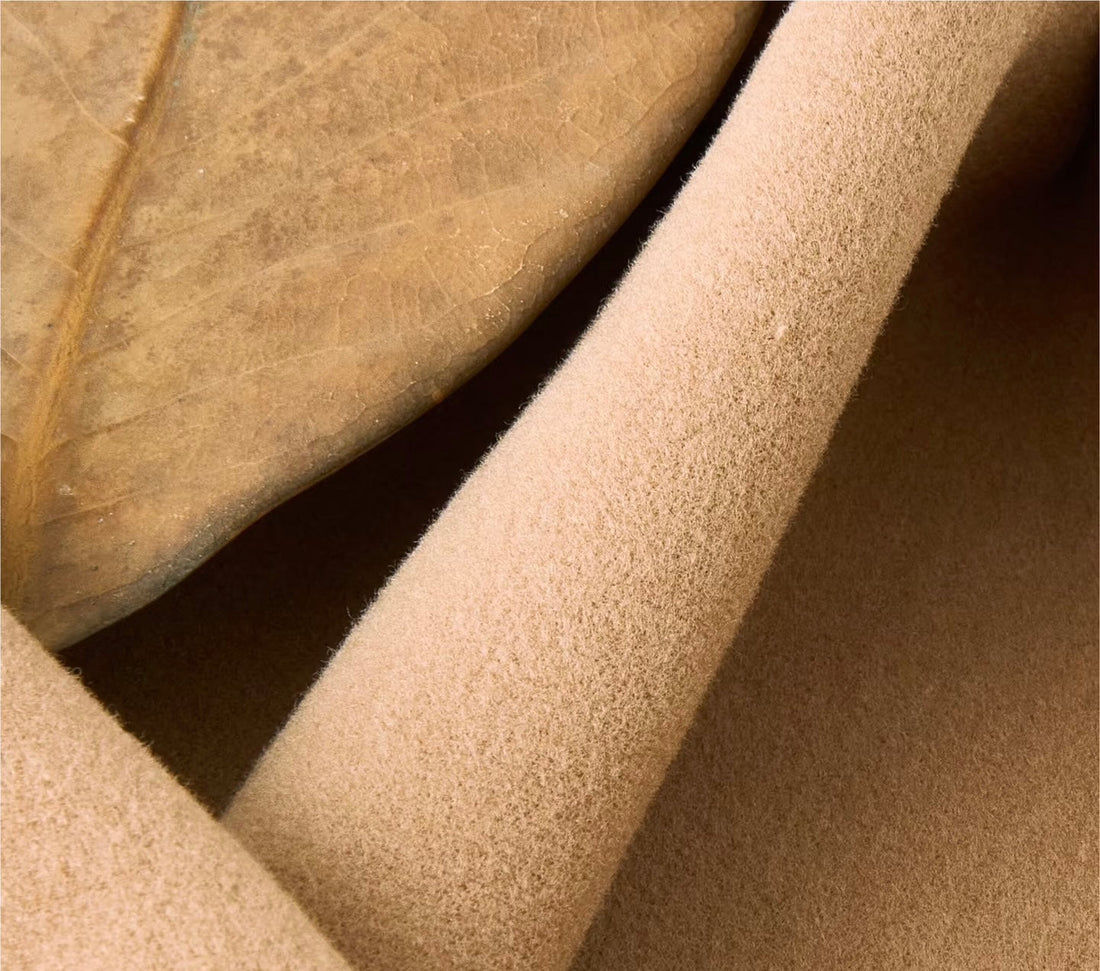
How Acrylic Fabric Works and Why It Might Be the Best Wool Alternative
Acrylic fabric is that soft, fluffy, wool-like material you keep reaching for when the weather turns cold. It’s warm, lightweight, and surprisingly itch-free—making it a favorite in winter wardrobes. And the best part? It’s way easier to care for than actual wool.
So what exactly is acrylic? What makes it feel so cozy? And is it as easy to care for as people say?
This guide walks you through everything you didn’t know you needed to know about acrylic fabric—from how it’s made to how to wash it (and whether you can throw it in the dryer—we know you’re wondering).
First things first: What is acrylic fabric?
Acrylic fabric is a man-made fiber designed to imitate wool, minus the animal and the price tag. It’s soft. It’s warm. It doesn’t shrink into a toddler-sized version of itself when washed.
Technically speaking, it’s made from acrylonitrile, a synthetic polymer derived from petroleum. But the end result feels a lot less like plastic—and a lot more like your favorite cold-weather staple.

So… what does it feel like?
If cashmere and fleece had a synthetic baby, it might feel like acrylic.
It's lightweight, soft, and surprisingly insulating for something that doesn’t come from a sheep. Some people say it feels “airy,” while others just appreciate that it doesn’t itch like traditional wool. Just be warned—lower-quality acrylic can feel scratchy or plasticky after a few washes.
Pros and cons? We've got those.
Like any fabric, acrylic comes with tradeoffs. Let’s break it down:
The Good Stuff:
- Wool-like texture—without the animal
- Super affordable (your wallet thanks you)
- Color stays vibrant (goodbye, faded black)
- Dries fast and resists wrinkles
- Hypoallergenic (great if wool makes you sneeze)
The Not-So-Good:
- Not super breathable—can trap heat and moisture
- Pills more easily than cotton or polyester
- Holds onto odors if not washed properly
- Not biodegradable
- Sensitive to heat (seriously, don’t toss it in on high)
How is acrylic fabric actually made?
Here's the simplified version:
- Start with acrylonitrile (basically, plastic soup).
- Spin it into fibers using air or water.
- Crimp and curl the fibers to mimic the bounce of wool.
- Spin those into yarns, knit, weave, and voilà—acrylic fabric.
It’s kind of like synthetic magic, but with chemistry.
How is it dyed?
Acrylic loves cationic (basic) dyes—think bold, bright, saturated color. These dyes create strong bonds with the fiber, so the color sticks around. Like, really sticks.
It’s one reason why acrylic sweaters still look brand-new even after 10 washes (as long as you treat them right).
Is it easy to work with?
Yes, which is why brands love it.
Acrylic is flexible, consistent, and ideal for knitting. It holds its shape, handles stretch well, and doesn’t demand complicated finishing techniques. That said, it can build up static during processing, and it doesn’t play nice with high heat.
What about blends?
Acrylic is kind of a social butterfly. It gets along well with:
- Wool, for added structure and softness
- Cotton, for extra breathability
- Polyester, for durability and wrinkle resistance
- Spandex, for stretch (hello, cozy leggings)
Blending acrylic with other fibers helps smooth out its weak spots, but it also means dyeing and heat treatment need to be more carefully controlled.
Do brands actually use acrylic?
Absolutely. You’ll find it in:
- UNIQLO gloves and beanies
- ZARA and H&M sweaters
- Patagonia outdoor accessories
- And pretty much any store that stocks winter essentials under $100
It’s a go-to for brands that want softness without the price of cashmere.
Let’s talk care (because nobody likes high-maintenance clothing)
Here’s the good news: acrylic is low maintenance.
- Machine washable (use cold or warm water)
- Air dries fast
- Doesn’t wrinkle
- Keeps its shape
Just don’t do this:
- Don’t tumble dry on high (acrylic + heat = bad idea)
- Don’t iron it like it’s cotton
- Don’t skip the fabric softener—it helps with static
Want to be extra safe? Wash it inside out and lay it flat to dry.

Is it affordable?
That’s kind of its thing. Acrylic is one of the most budget-friendly fabrics around. Here's a quick comparison:
| Fabric | Average Cost/Yard |
|---|---|
| Acrylic | $2–$5 |
| Wool | $15–$30 |
| Cotton | $5–$10 |
It’s easy on your wallet whether you’re buying one hoodie or designing a full collection.
Final thoughts: Should you wear acrylic?
If you like soft sweaters that don’t need dry cleaning, acrylic is worth a spot in your closet. It's not perfect, but it’s warm, easy to care for, and stylish in all the right ways.
Whether you’re layering up for a windy walk or just love that oversized fuzzy hoodie look—acrylic’s got your back.
Want to explore breathable, easy-care fabrics in real life?
Check out our
—engineered for comfort, durability, and lasting structure.
Want to explore how acrylic compares to other fibers? We dive deeper into fabric science on our textile knowledge blog.
